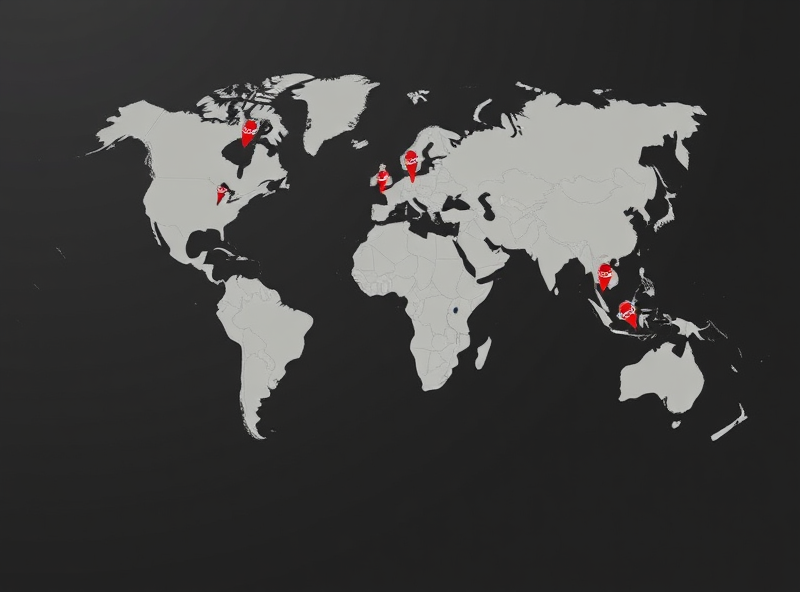
Coca-Cola (KO) Stock: A Refreshing Look for Investors

The Coca-Cola Company is the world’s largest beverage company, operating in more than 200 countries and territories. While the Coca-Cola brand itself is legendary, the company’s portfolio includes a vast array of sparkling soft drinks, water, sports drinks, juices, teas, and coffees. Think of brands like Diet Coke, Sprite, Fanta, Dasani, Smartwater, Minute Maid, Powerade, and many, many others. This extensive portfolio allows them to cater to diverse consumer tastes and preferences around the world.
Unlike many companies that manufacture and distribute their own products directly, Coca-Cola operates primarily as a franchisor and licensor. They manufacture and sell beverage concentrates and syrups to bottling partners, who then manufacture, package, merchandise, and distribute the finished beverages to retailers and vending partners. This capital-light model allows Coca-Cola to focus on brand building, marketing, and innovation, while relying on its network of bottling partners for the heavy lifting of production and distribution. This unique structure is a fundamental aspect of their business and contributes to their high profitability and strong cash flow generation.
The Power of the Coca-Cola Brand and Global Reach
The Coca-Cola brand is arguably one of the most valuable and recognized brands in the world. Its history, emotional connection with consumers, and consistent marketing efforts have built unparalleled brand equity. This strong brand allows the company to command premium pricing in many markets and maintain consumer loyalty.
Operating in over 200 countries means Coca-Cola has an incredible global footprint. This provides diversification across different economies and consumer markets. While performance in one region might be affected by local conditions, strength in other regions can help balance overall results. Their global distribution network, built through strong relationships with bottling partners, ensures their products are available almost everywhere, from major cities to remote villages.
This extensive global reach and powerful brand portfolio are significant competitive advantages. Building a beverage network and brand recognition of this scale would be incredibly difficult and expensive for any potential competitor. This creates a wide “moat” around Coca-Cola’s business, protecting its market position.
Business Segments: A World of Beverages
Coca-Cola reports its results across various geographic operating segments (like North America, Europe, Asia Pacific, Latin America, etc.) and also by global ventures and Bottling Investments. While the geographic segments reflect where the sales occur, understanding the types of beverages they sell is also key.
Their portfolio includes Sparkling Soft Drinks (the core Coca-Cola brand family, Sprite, Fanta, etc.), Water, Enhanced Water & Sports Drinks (Dasani, Smartwater, Powerade), Juice, Dairy & Plant-Based Beverages (Minute Maid, Simply, Fairlife), and Tea & Coffee (Georgia Coffee, Costa Coffee). This diversification beyond just sparkling beverages has been a strategic focus for the company as consumer preferences shift towards healthier options.
By offering a wide range of beverages, Coca-Cola can capture a larger share of the total beverage market and adapt to changing trends. For example, as soda consumption has faced headwinds in some markets, the company has expanded its offerings in water, tea, and coffee to continue growing.
Financial Performance and Stability
Coca-Cola is often considered a defensive stock, similar to other consumer staples companies. Demand for beverages, while not entirely immune to economic conditions, tends to be relatively stable compared to discretionary goods. People continue to buy drinks even during economic downturns, which provides a level of resilience to Coca-Cola’s financial performance.
The company has a long history of consistent revenue growth, driven by increases in volume, pricing, and mix (selling more higher-margin products). Their capital-light model, relying on bottlers for heavy manufacturing, contributes to high operating margins and strong profitability. This efficiency is a key factor in their financial strength.
Coca-Cola is also a strong generator of free cash flow. This cash flow is essential for funding investments in their brands, expanding their portfolio, and returning value to shareholders. The predictability of their cash flow, supported by stable demand for their products, is a major positive for investors.
Dividends: A Sweet Treat for Investors
One of the most attractive features of Coca-Cola stock for many investors is its exceptional dividend history. Coca-Cola is a “Dividend King,” having increased its annual dividend for over 60 consecutive years. This is one of the longest streaks of dividend growth of any company in the world, demonstrating incredible financial discipline and a deep commitment to returning value to shareholders.
For income-focused investors, KO’s reliable and growing dividend is a cornerstone of their portfolio. The ability to consistently raise the dividend through various economic cycles and market conditions speaks volumes about the resilience and profitability of Coca-Cola’s business model and the strength of its brand portfolio. The dividend yield is often competitive and provides a steady income stream.
Share Buybacks and Capital Allocation
In addition to paying dividends, Coca-Cola also returns value to shareholders through share buybacks. By repurchasing its own shares on the open market, the company reduces the number of outstanding shares, which can help boost earnings per share and potentially increase the stock price over time. The amount of share buybacks can vary depending on the company’s cash flow and strategic priorities.
Coca-Cola’s management makes decisions about how to allocate capital among various priorities: investing in brand building and marketing, expanding the product portfolio through innovation or acquisitions, supporting bottling partners, paying dividends, and buying back shares. These capital allocation decisions are important for the company’s long-term strategy and shareholder value creation.
Risks and Challenges in the Beverage Industry
Despite its dominant position, Coca-Cola faces various risks and challenges. Changing consumer preferences, particularly a growing focus on health and wellness, can impact demand for traditional sugary soft drinks. While Coca-Cola has diversified its portfolio, adapting to these shifts and innovating with new products (like lower-sugar options, functional beverages, and non-carbonated drinks) is an ongoing necessity.
Competition in the beverage industry is intense, both from major global players (like PepsiCo) and numerous local and regional beverage companies. Pricing pressure, marketing battles, and the fight for shelf space are constant factors. Regulatory challenges, such as taxes on sugary drinks or restrictions on marketing to children, can also impact the business in various markets.
Supply chain disruptions, rising ingredient costs (like sugar or aluminum), and currency fluctuations from international operations can affect profitability. While the franchise model mitigates some operational risks, it also means Coca-Cola’s performance is tied to the success and efficiency of its bottling partners.
Innovation and Adapting to Consumer Trends
To stay relevant and continue growing, Coca-Cola must constantly innovate. This includes developing new flavors, introducing lower-sugar or zero-sugar versions of popular drinks, expanding into entirely new beverage categories (like premium coffees or plant-based drinks), and developing sustainable packaging solutions. Understanding and responding quickly to evolving consumer tastes is crucial.
The company also leverages digital technology for marketing, consumer engagement, and optimizing its supply chain and distribution with bottling partners. E-commerce is becoming an increasingly important channel for beverage sales, and Coca-Cola is working to strengthen its presence in online retail.
Global Growth Opportunities
While Coca-Cola is already a global company, significant growth opportunities still exist, particularly in emerging markets. As incomes rise and middle classes expand in countries in Asia, Africa, and Latin America, demand for branded beverages tends to increase. Expanding distribution networks and tailoring product offerings to local tastes in these markets are key growth strategies.
Furthermore, increasing per capita consumption of beverages in many parts of the world, even in established markets, provides ongoing growth potential. Coca-Cola aims to be the beverage of choice for every consumption occasion.
The Importance of Bottling Partners
The relationship between The Coca-Cola Company and its bottling partners is fundamental to its business model. These partners invest in manufacturing plants, trucks, and distribution infrastructure. Coca-Cola provides the concentrates, marketing support, and brand strategy. The success of the entire system relies on the strength and efficiency of these partnerships. Coca-Cola sometimes takes ownership stakes in bottling operations (Bottling Investments) to help ensure their health and performance.
Valuation Considerations for KO Stock
When considering KO stock, investors often look at valuation metrics such as the price-to-earnings (P/E) ratio, price-to-sales ratio, and dividend yield. As a stable, profitable company with a strong brand and reliable dividend, Coca-Cola often trades at a premium valuation compared to the broader market.
Analyzing these metrics in the context of Coca-Cola’s historical valuation, its growth prospects (which are often steady rather than explosive), and comparing it to peers in the consumer staples or beverage sector are important steps. The stability and dividend reliability are key factors influencing its valuation.
Conclusion: A Timeless Global Brand
In conclusion, The Coca-Cola Company (KO) is a global beverage icon with an unparalleled brand, a vast distribution network, and a highly profitable business model. Its focus on essential consumer beverages provides a degree of stability, and its remarkable history of dividend growth makes it a favorite among income investors. While facing challenges from changing consumer tastes and intense competition, Coca-Cola is actively innovating and leveraging its global scale to adapt and pursue growth opportunities, particularly in emerging markets and new beverage categories. For investors seeking exposure to a stable, global consumer brand with a strong dividend track record, understanding the enduring power and strategic evolution of Coca-Cola is essential.







